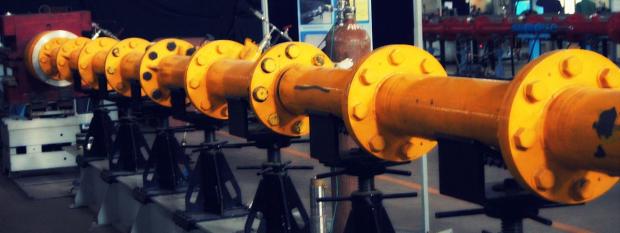
Photo Credits: Siddharth Kankaraia / Research Matters
With the invention of telescopes in the 17th century, astronomers around the globe started studying the planets of the Solar system. Several spacecraft have been sent to the planet for exploration including orbiters, landers and rovers, with the recent ones being NASA’s MAVEN and Indian Space Research Organization’s MOM. The biggest challenge faced by the spacecraft on such expeditions is the heat generated due to its speed. Now, scientists at the Indian Institute of Science, Bangalore, are experimenting with a new technology that can help in faster dissipation of the heat in spacecraft entering the Martian atmosphere.
When a spacecraft starts to descend on the surface of a planet, a large amount of heat is generated due to the speed of descent. This heat could damage the spacecraft and hence the spacecraft requires an additional Thermal Protection System (TPS) that acts as a barrier between the high-temperature gas in shock layer (which is layer of molecules formed between the outer blunt portion of the spacecraft i.e. forebody and the atmosphere like a cushion) and the spacecraft, during planetary entry.
Until now, the TPS used on all spacecraft entering the Martian atmosphere is “ablation”cooling where the TPS material heats up and burns to form a hot gas. This hot gas gets blown away as the spacecraft moves towards the planet. This blocks the heat transfer to the surface of the spacecraft. “Ablation cooling is very expensive when reusability of the spacecraft is concerned”, says Prof. K. P. J. Reddy, Professor at the Department of Aerospace Engineering.
The team lead by Prof. Reddy carried out an experimental study to investigate the effectiveness of the “transpiration”cooling technique, an alternative to the conventional “ablation” cooling. This technique involves passing of a coolant gas through a porous wall that absorbs the heat and gets blown away. The coolant gas forms a film on the outer surface of the spacecraft, absorbing heat from the molecules that it comes in contact with, via convection. The heated coolant gas is then flushed downstream by the continuous supply of gas from the spacecraft. In this way, the heat transferred to a vehicle traveling at hyper velocities can be greatly reduced. With the development of ceramic matrix composites like Carbon/Carbon ceramic, which can withstand very high temperatures and has natural porosity, transpiration cooling seems to be a promising technique.
The experiment carried out at IISc tested the transpiration cooling ability of two gases - Nitrogen and Helium. “Nitrogen and Helium were chosen because of their inert nature which wouldn’t react with the environment and result in high heat transfer rates”, says Dr. Ibrahim, the lead author of the study. These experiments were carried out in conditions similar to Martian atmosphere and the team tested the transpiration cooling under different internal energy levels, pressure conditions and volume.
A reduction in the heat transfer rate was observed using both the coolants. At low levels of internal energy, pressure and volume, Helium resulted in a better heat transfer rate reduction than Nitrogen. This is because Nitrogen molecules absorb more heat for the corresponding increase in temperature as compared to Helium due to its its higher volume flow rate.
At high levels of internal energy, pressure and volume, Nitrogen performed better than Helium due to the diatomic nature of Nitrogen molecules. As Nitrogen is always present as a dimer along with one other Nitrogen atom, it is able to store more energy, undergoes excitation and dissociation at higher temperatures. Also, greater reduction in heat transfer rate was observed when more coolant gas was pumped downstream.
Both of the gases can be used as coolants in the transpiration cooling process with different efficiencies. While one gas is a better coolant at lower atmospheric energy levels, another is better at higher atmospheric internal energy levels. “Transpiration cooling is relatively cheaper when reusability of the space craft is concerned. With the recent flight test of ISRO on reusable vehicle and with the development of C\C composites within the country, we feel that transpiration cooling technique will be incorporated within next 10 years. Research is currently underway in our laboratory to generate mist using water, and use it as coolant”, signs off Prof. Reddy.
























